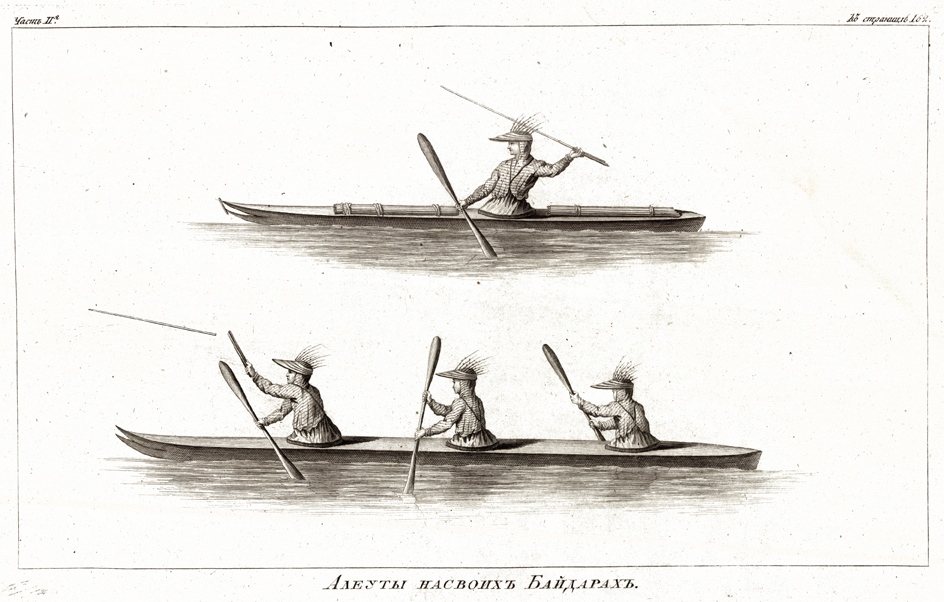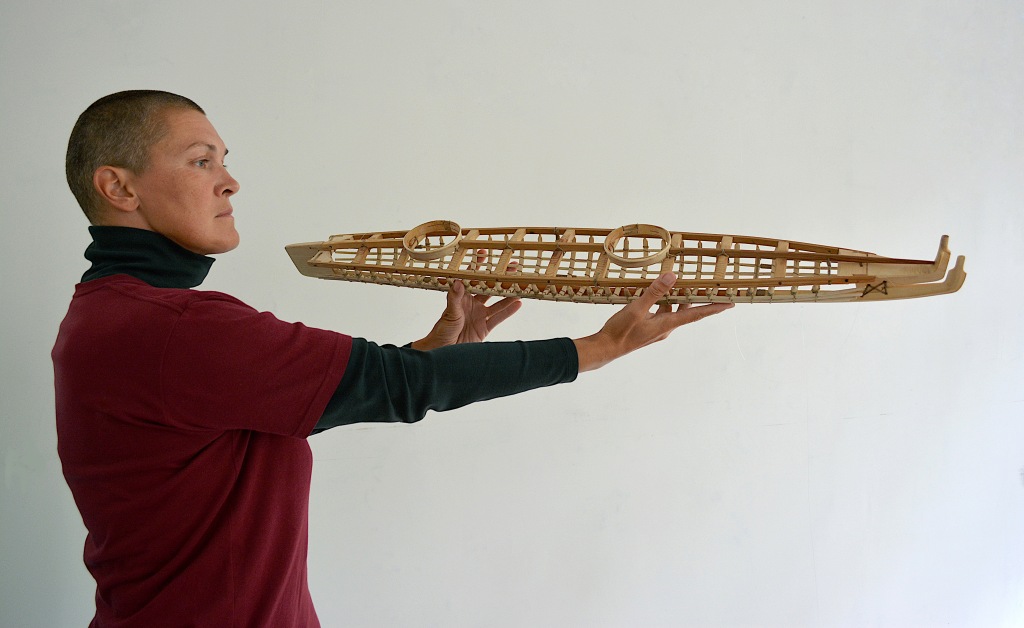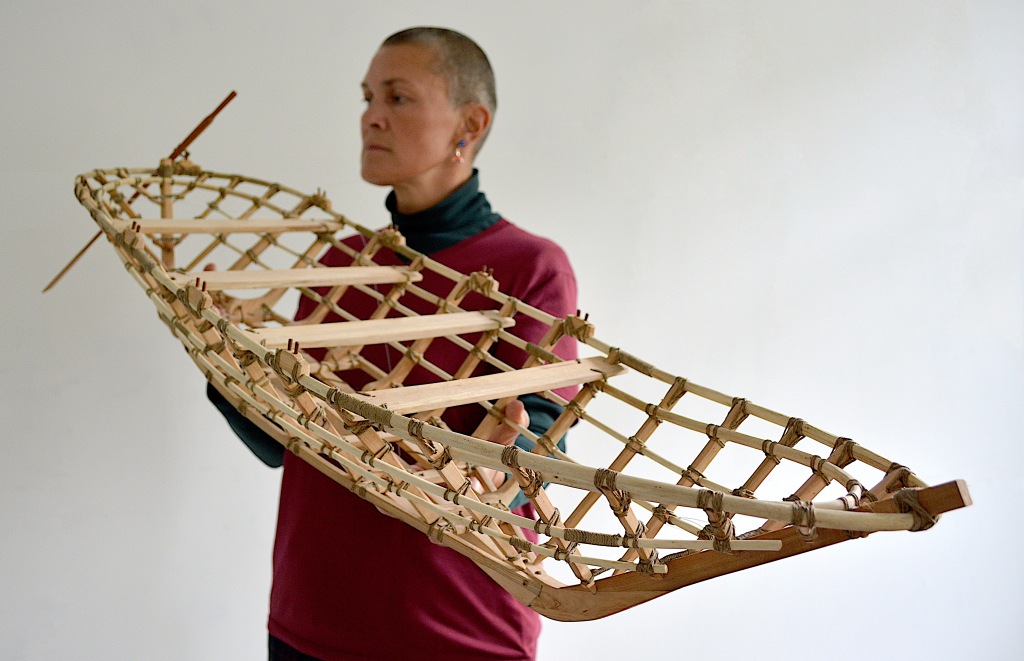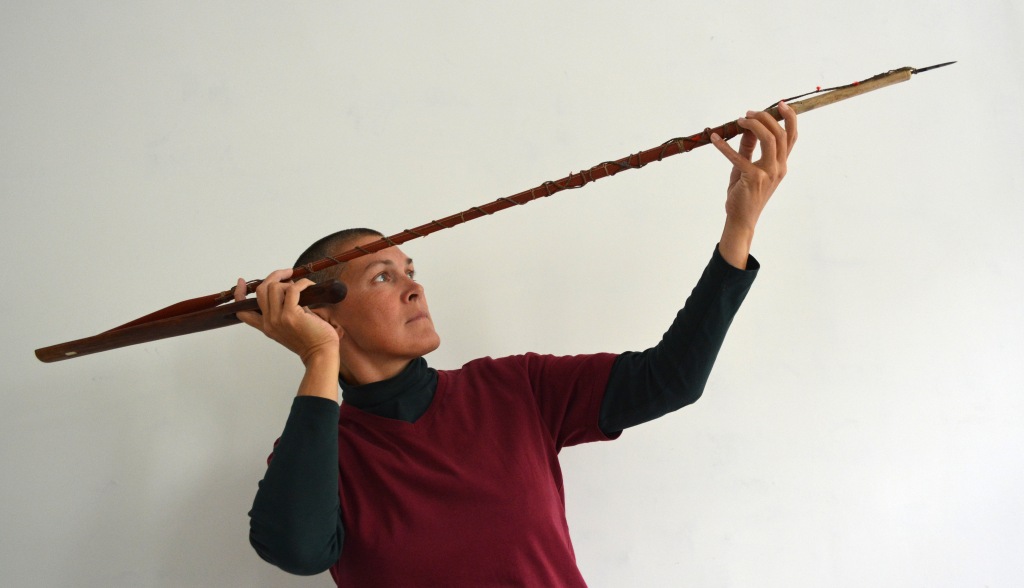Recently, the collection of the Komandorskiy reserve has been replenished with four new items. All of them are intended for demonstration in the "Nature Management" exposition hall, which is now in formation.
The Vyuev family (Moscow) took part in the manufacture of the items. The lion's share of the work (modeling and manufacturing of all wooden structures) was performed by Ilya Pavlovich Vyuev, a wonderful sculptor, author of Vitus Bering sculpture, which has been decorating the central square of the Nikolskoye village since 2016. His wife, Inna Aleksandrovna Lipilina, was his constant assistant. She manufactured the soft fasteners and assembled the peices. It is also worth noting the important role of Alexandra Vyueva, daughter-in-law, a creative and outstanding person.
From the side of the reserve, the project was supervised by Natalya Tatarenkova, the head of Historical and Cultural Heritage Preservation Department. The project did not appear out of the blue. This is not a repetition of objects depicted in museum photo albums. Not copying. This is a result of a long-term research work. Information about the Commanders' items was collected bit by bit, mainly during vacation time. Someone bask on the beaches, someone goes to the forest or fishing, and fans of their craft sit in museums and study every chip, every hole, every knot. Slowly, scrupulously, with a magnifying glass. By recording, sketching and filming all the smallest details.
The earliest objects of interest to us were stored in Krakow. In 1884, they were taken out by Benedict Dybowski. In those years, Poland was part of the Russian Empire. Kamchatka and Commanders products were shown in Lvov and Warsaw and made a splash (for more details about the collection, see here ). At the beginning of the twentieth century, some of the materials ended up in Krakow. Over time, the items have become dilapidated, many details have been lost, but the Polish colleagues tremblingly keep the heritage of their fellow countryman. Together with them we looked, studied, restored labels. This was how the basis for the current reconstruction was laid, supplemented by materials from other museums, primarily the Kunstkamera.
But what a reconstruction without a "legend", without its story? And “story” must be sought on the other side of the earth - in Vladivostok. The head of the department was sent there in 2018. So it was possible to recreate slowly, step by step, the picture of the 19th century. It took almost 10 years to collect and process information!

Eastern Aleuts (Russian Archive of Naval Forces. F. 1331. Series. 4. D.705. L.48)
Models of frames for two-person kayaks and transport canoes
Commander Islands Aleuts had items similar to their eastern counterparts, but at the same time different ones. At the time of the Russian-American Company, the Commanders and the Western Aleutian Islands formed the Atkha department (with the main office on Atka Island). It had its own dialect, its own customs, its own methods of environmental management - similar, but still unique. Even the shape of the kayaks was different. And even more so - a cargo kayak. The latter experienced the strongest impact of the peoples inhabiting Kamchatka. And rightly so - every nation or group adapts to its natural conditions. Even the names were slightly different: the western Aleuts called the two-person kayaksулу?тал?у?, and the eastern ones -aalaxulu?ta?.
The main part of the kayak was a wooden frame, traditionally made of red cedar (Thuja plicata), which has light and durable wood. According to the stories, in the 18th century the frame of some eastern kayaks included up to 60 (!) bone parts - so that each part of the boat “had movement”, played on the water. The details were attached with a whalebone. The 19th century models were simplified and included only a wooden set. The whalebone was used much less frequently. The finished frame was covered with the skin of a sea animal, mainly sea lion. The cladding was changed at least once a year.

Reserve volunteer Yulia Darkova with a model of a two-person kayak. Photo - Elena Zakharova, designer - Natalia Tatarenkova
In the 19th century, one-, two- and three-person Aleutian kayaks were used on the Commander Islands. At the end of the century Bering Island locals preferred one-person, and on Medny Island they preferred two-person. This difference is due to the peculiarities of nature use. On Medny Island, sea beavers (sea otters) were harvested from kayaks, and on Bering, sea otters were extremely rare. It was most convenient to hunt these valuable fur-bearing animals in a pair: a hunter and a rower. Hence the popularity of two-person kayaks.
There were few three-person kayaks on each of the islands. They performed the function of transport. They came into use with the arrival of the Russians.
In addition to kayaks, the Aleuts used traditional light kayaks.

Volunteer of the reserve, Yulia Darkova with a kayak model. Photo - Elena Zakharova, designer - Natalia Tatarenkova
In the 1880s, the number of kayaks began to decline. This process was especially rapid on the island of Bering. In the 1890s, imported wooden whaleboats (lifeboats) replaced traditional watercraft.
Souvenir models of traditional Aleutian kayaks were very popular at the end of the 19th century. Commanders miniatures with and without riders have been preserved in museums in St. Petersburg, Irkutsk, Khabarovsk, Vladivostok, Washington and Krakow. This work reproduces one of them.
Model of a pair: beaver "arrow" and a throwing board
“Arrows” were the relatively light Aleutian darts with removable tips that existed on the territory of Russian America in the 18th-19th centuries. Their length varied from 1.2 to 1.5 meter - depending on the biometric parameters of the hunter. The blade of the "arrow" was freely articulated with the weighting bone attachment and was easily detached upon impact. The bone attachment was firmly attached to the wooden shaft. Due to the specific throwing technique and the presence of a weighting attachment, the flight path resembled the trajectory of arrows.
In the Aleutian language there were many words denoting different types of throwing weapons. For harpoons and "arrows" there was a general conceptи?ла? (и?алу?).Beaver "arrows" were calledч?атум и?лага.
"Arrows" were thrown from special boards called ’асху?. A small bone or metal tongue holding the shaft was calledасху?- "nail".
For preparing of pole and missile plate the used yellow cedar if possible. They dried and made billets before using the tree properly. They chose the best pieces, without cracks, knots and flaws.
Both arrows and throwing boards were made for each hunter individually. They were carved either by the fisherman himself, or by one of the recognized island craftsmen. All measurements were carried out not in a universal, but in a biometric system, that is, the sizes of the hands and fingers of a particular person were needed. The details were first glued together with fish glue or ichor from the nose, and then they were fixed with a winding knot over a thin birch bark cover. The birch bark prevents slipping. To prevent the bone attachment from sinking in the event of an unforeseen breakage, it was additionally secured with a thin line stretching along the shaft. The shaft was always painted bright red. If the hunter missed, the "arrow" floating up vertically was visible from afar.
Beaver "arrows" differed from other "arrows" in the structure of the maut (tench): at a distance of about 55 cm from the blade, it bifurcated in a V-shape. In a combat state, the maut was twisted around the shaft. As soon as after the throw the blade was fixed in the body and separated from the bone attachment, the maut unfolded and turned the “arrow” in such a way that it stood across the direction of movement, drilled the water and thereby slowed down the beast. Each kayak, regardless of the purpose of the trip, necessarily had 2-3 simple "arrows" and one with a bubble. In the 19th century, during the beaver hunt, they took up to 15 beaver "arrows" with them.

Volunteer of the reserve, Yulia Darkova with a beaver "arrow" model. Photo - Elena Zakharova, designer - Natalia Tatarenkova

Beaver "arrow" model. Photo - Elena Zakharova, designer - Natalia Tatarenkova
Young men went on beaver hunting at the age of 17, but they began to train at the age of 10. Not everyone was taught, but only those who showed interest and ability. The sea beaver hunting can rightfully be considered a symbol of the Aleutian hunting skill.
The recreated model is made with such precision that it is almost in no way inferior to the real one. But, of course, you can't throw it. Even the traditional ones were thrown only on the water - the weighting nozzle is too fragile for use on land. Ours is even more so. But you can pick up a throwing board and feel how the hand literally merges with it.
Author: Natalya Aleksandrovna Tatarenkova, Head of Historical and Cultural Heritage Preservation Department of the Federal State Budgetary Institution "State Natural Biosphere Reserve" Komandorsky "named after S.V. Marakov".
More details about the "arrows" can be found in the book:Tatarenkova N.А.Reviving traditions: portrait dolls "Aleut and Aleutka". - Petropavlovsk-Kamchatsky, 2020.









